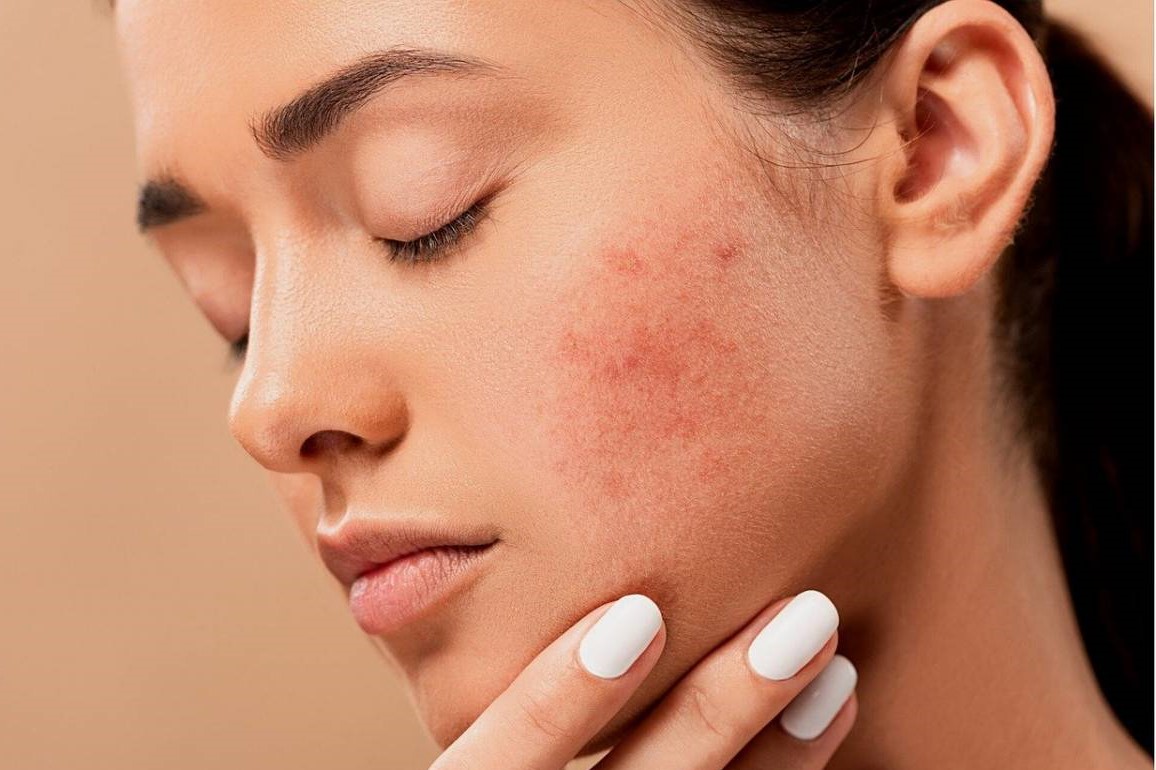
Remedies and causes of couperose on the face
Couperose manifests itself with reddish, cobweb-like veins particularly on the cheeks and nose. It mainly affects women with an onset between the ages of 30 and 40 and, although it is not a serious disease, it can have a major psychological impact
For this reason and because of the risk of it worsening over time, rosacea should not be underestimated.
What is Couperose
Couperose is a skin disorder that affects the skin of the face in the most photo-exposed area, i.e. the cheeks and nose, and is closely linked to blood circulation.
It is caused by the excessive and persistent dilatation of the capillary vessels in the skin, small, naturally elastic tubes that dilate when more blood needs to flow, and then constrict.
This elasticity tends to diminish over time with the result that, once dilated, the capillaries are no longer able to return to their initial condition and thus become visible, taking on the appearance of a network or spider web.
The factors that cause or can trigger couperose are many and varied:
- family predisposition;
- blood circulation disorders;
- infections (Demodex follicolorum, Helicobacter pylor, etc.);
- stress, emotions, anxiety;
- exposure to ultraviolet rays;
- exercise;
- temperature changes;
- sun exposure;
- spicy food or hot food and drink;
- medicines;
- alcohol.
Symptoms of couperose
The most common symptoms are frequent and prolonged episodes of redness, associated with a sense of heat and burning.
In some cases, if neglected, rosacea can become chronic, worsen and evolve into rosacea, a pathological skin disorder usually affecting the central area of the face, with symptoms such as:
- erythema
- telangiectasias;
- papules;
- acneiform pustules.
Who may be prone to couperose
People most prone to rosacea problems are those with:
- fair and thin skin;
- dry skin.
Periods that are particularly at risk are pregnancy, especially the third trimester, phases of life during which, due to hormonal changes, disturbances in blood microcirculation can also occur.
How to treat rosacea: remedies and treatments
As it is a chronic problem, it is difficult to cure rosacea permanently.
There are, however, a number of measures that can help to limit the appearance of the disorder and also specific therapies that are effective in making dilated capillaries and telangiectasias less noticeable.
As far as ‘good rules’ to follow, if you are prone to rosacea, it is advisable to
- take good care of your skin, using emollients to repair and maintain the skin barrier, dermocosmetics with a fresh, light texture that promote superficial and deep hydration to make the skin more resistant to external stimuli;
- avoid cosmetics with alcohol and menthol;
- avoid exposure to the sun during the hottest hours of the day, spraying water to cool the skin;
- always remember to apply high protection when exposing yourself to the sun;
- consume microcirculation-friendly foods such as blueberries, raspberries, kiwis and red grapes rich in bioflavonoids;
- limit smoking, alcohol and spicy foods that promote vasodilation.
In cases where unsightly redness is present, drugs that temporarily constrict the capillaries, such as brimonidine and oxymetazoline, can be used.
Their effect, however, is only temporary.
The Laser
To treat telangiectasias with more lasting results, the Nd:YAG laser or pulsed light can be used.
In both cases, a beam of light and heat is used to cause coagulation of the vessel and its subsequent absorption.
In this way, superficial capillaries become less noticeable, except for those deeper down, which are not reached by the pulsed light and laser beam.
Read Also:
Emergency Live Even More…Live: Download The New Free App Of Your Newspaper For IOS And Android
Epidermolysis Bullosa And Skin Cancers: Diagnosis And Treatment
Skin: What To Do In Case Of Folliculitis?
Childhood Psoriasis: What It Is, What The Symptoms Are And How To Treat It
Dermatological Examination For Checking Moles: When To Do It
What Is A Tumour And How It Forms
Rare Diseases: New Hope For Erdheim-Chester Disease
How To Recognise And Treat Melanoma
Moles: Knowing Them To Recognise Melanoma
Skin Melanoma: Types, Symptoms, Diagnosis And The Latest Treatments
Melanoma: Prevention And Dermatological Examinations Are Essential Against Skin Cancer


